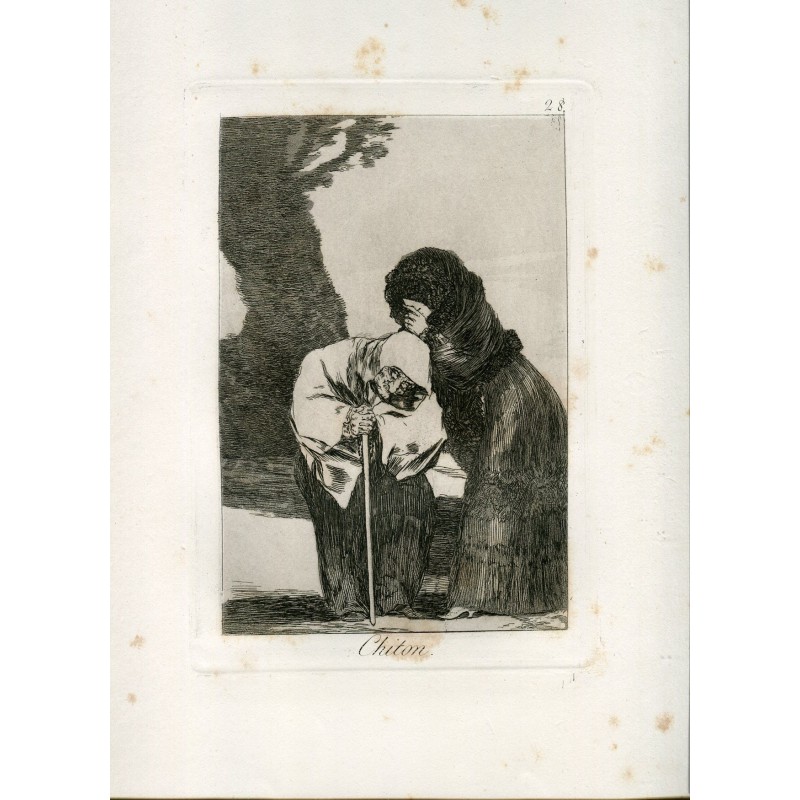Francisco de Goya y Lucientes. 'Chiton' (Hush). Plate 28 from Los Caprichos. 5th edition (1881-1886)
This fifth edition of Los Caprichos was printed between 1881 and 1886 in the Calcografía de la Real Academia, stamped in etching and aquatint and with drypoint, in soft sepia ink. The plates were beveled and the binding was done at the top of the prints. The edition consists of 210 copies. Very clean and correct tinted stamping; aquatint allows shadows to be nuanced by creating grayscale gradation and dramatic, haunting lighting. The strong paper used does not have a water mark as usual as Harris catalogs it. The original folder in which the complete collection was presented was made of cream cardboard with the portrait of Goya stamped on the cover and the Title: “Fran.co Goya y Lucientes Pintor”.
'Chiton' (Plate 28) is part of The Caprichos. In the scene, a semi-hidden woman is represented with a mantilla that carries a finger to her mouth indicating discretion to a poor woman at the foot of a tree. According to Gassier (1975: 87), this picture could be paired with Capricho 22 (G02110), since after the hapless prostitutes, who were harshly punished by the laws, the lady represented here has a behavior no less reprehensible, but lives to her craving without being disturbed. Hush! is what the elegant young woman murmurs as she bows to the old matchmaker. Discretion, silence: the gallant message will reach its destination and the old woman will receive its due.
Plate size: 15x21,5 cm.
Paper size: 26x36.5 cm.
It has rust stains that can be seen in the image.
Los caprichos (The Caprices) is a set of 80 prints in aquatint and etching created by the Spanish artist Francisco Goya in 1797-1798, and published as an album in 1799 (first edition). The prints were an artistic experiment: a medium for Goya's condemnation of the universal follies and foolishness in the Spanish society in which he lived.
Thirteen official editions are known: that of 1799, five in the 19th century, and seven in the 20th century. Being the last one in 1970 carried out by the Royal Academy of Fine Arts of San Fernando.


